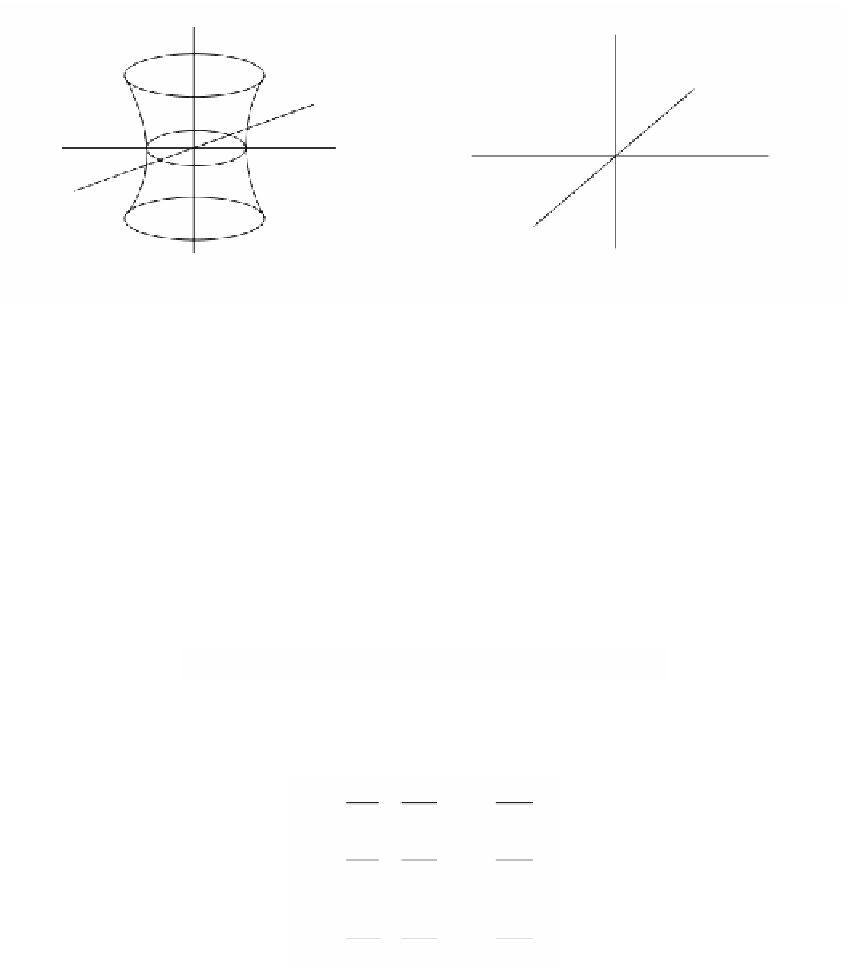Graphics Reference
In-Depth Information
z
z
y
y
x
x
(a)
(b)
Some varieties in
R
3
.
Figure 10.21.
The four examples above are very nice and manifold-like, although, in general,
varieties can have bad singularities, even in
R
3
. Concentrating on the nice cases for a
moment, one might be tempted to define dimension in terms of parameterizations
like we did for manifolds. In fact, there is a version of the implicit function theorem
for complex analytic maps that gives us a criterion for when a point is not a singular
point and has a neighborhood that can be parameterized. The precise version of this
theorem is too technical to state here, but it has the same flavor as Theorem 4.4.7.
See [Kend77] for details. We sketch the basic idea.
Let
V
= V(f
1
,f
2
,...,f
m
), f
i
Œ
C
[X
1
,X
2
,...,X
n
], be a variety in
C
n
. Define
n m
:
CC
F
Æ
by F(
x
) = (f
1
(
x
),f
2
(
x
), . . .,f
m
(
x
)) and consider the Jacobian matrix F¢ for this map,
that is,
∂
∂
f
x
∂
∂
f
x
∂
∂
f
x
Ê
ˆ
1
1
1
2
1
L
Á
Á
Á
Á
Á
Á
Á
˜
˜
˜
˜
˜
˜
˜
n
(10.92)
∂
∂
f
x
∂
∂
f
x
∂
∂
f
x
2
1
2
2
2
L
F
¢=
.
n
M
M OM
L
∂
∂
f
x
∂
∂
f
x
∂
∂
f
x
mm
m
n
Ë
¯
1
2
One can show that if F¢ has rank r in the neighborhood of a point
p
in
C
n
, then a
neighborhood of
pinV
is an (n - r)-dimensional
complex
manifold. Because we are
dealing with a local property here, one that only involves points in an arbitrarily small
neighborhood of a point, one can prove a similar result for projective varieties since
P
n
(
C
) looks like affine space locally. These results can be used to define the dimension
of a variety.
Definition.
If
p
is a point of
V
that has a neighborhood in
C
n
on which the Jaco-
bian matrix F¢ in formula (10.92) has constant rank r, then
p
is called a
smooth point


